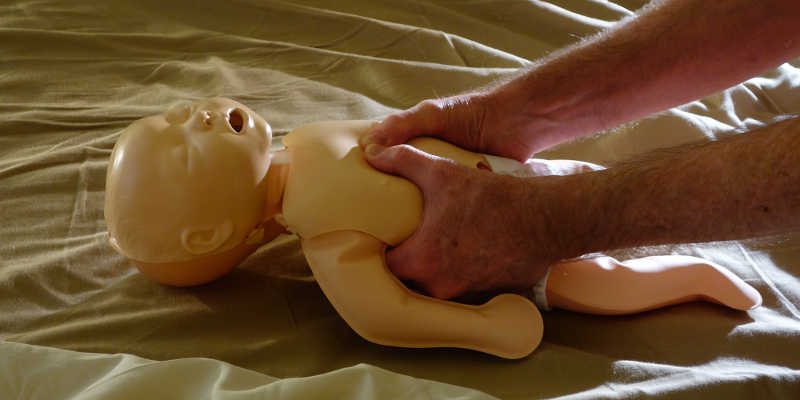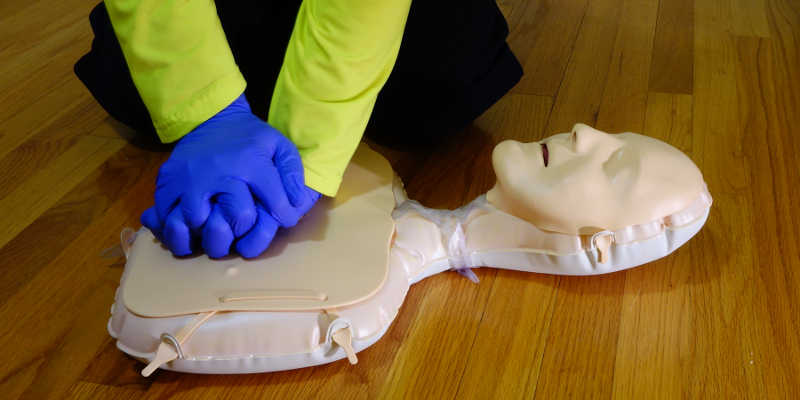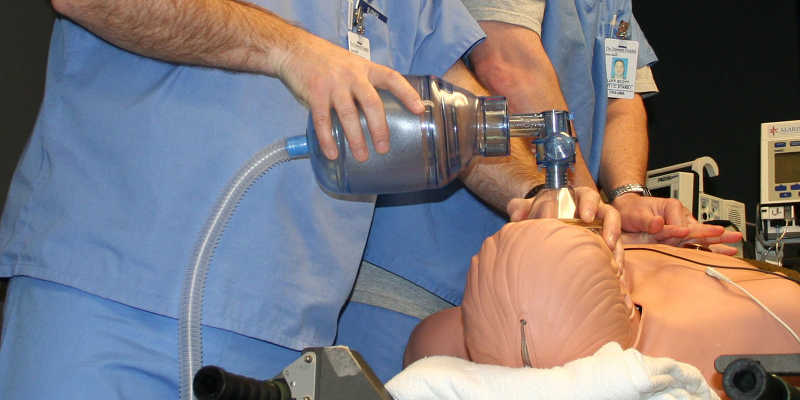Beatbox CPR
In the English language, the rhythm of counting does not naturally flow with the two-beat rhythm of cardiopulmonary resuscitation. For example, "seventeen", with its three syllables, has a triple beat. Since the rhythm of CPR is set, the way to synchronize counting with compressions is to adjust one's verbalization.
Beatbox CPR for Infants and Children

For rhythmically counting from one through ten, the single syllable numbers can be matched to the down-and-up rhythm of chest compressions with the addition of "and", or more realistically, "an". "Seven," with its two natural beats, remains as is. This can be visualized as:
- One-an
- Two-an
- Three-an
- Four-an
- Five-an
- Six-an
- Sev-en
- Eight-an
- Nine-an
- Ten-an
From eleven though fifteen, the system gets a little complicated due to the three-syllable "eleven."" This can be addressed by representing the eleventh through fifteenth compression by repeating the rhythmically counted first through fifth compression. Thus, a fifteen compression count (for infant and child CPR) can be visualized as:
- One-an
- Two-an
- Three-an
- Four-an
- Five-an
- Six-an
- Sev-en
- Eight-an
- Nine-an
- Ten-an
- One-an
- Two-an
- Three-an
- Four-an
- Five-an
Another way to count one through fifteen is by contracting "eleven" and replacing the previous beat with "e:"
- One-an
- Two-an
- Three-an
- Four-an
- Five-an
- Six-an
- Sev-en
- Eight-an
- Nine-an
- Ten-e
- Lev-en
- Twelve-an
- Thir-teen
- Four-teen
- Fif-teen
Beatbox CPR for Adults

There are three good ways to rhythmically count from 1 through 30 (for adult CPR). A one-to-fifteen count can be repeated verbatim:
- One-an
- Two-an
- Three-an
- Four-an
- Five-an
- Six-an
- Sev-en
- Eight-an
- Nine-an
- Ten-e
- Lev-en
- Twelve-an
- Thir-teen
- Four-teen
- Fif-teen
- One-an
- Two-an
- Three-an
- Four-an
- Five-an
- Six-an
- Sev-en
- Eight-an
- Nine-an
- Ten-e
- Lev-en
- Twelve-an
- Thir-teen
- Four-teen
- Fif-teen
A one-to-fifteen count can be repeated with a placemark at the beginning of the repeat:
- One-an
- Two-an
- Three-an
- Four-an
- Five-an
- Six-an
- Sev-en
- Eight-an
- Nine-an
- Ten-e
- Lev-en
- Twelve-an
- Thir-teen
- Four-teen
- Fif-teen
- Two-an
- Two-an
- Three-an
- Four-an
- Five-an
- Six-an
- Sev-en
- Eight-an
- Nine-an
- Ten-e
- Lev-en
- Twelve-an
- Thir-teen
- Four-teen
- Fif-teen
The one-to-ten count can be repeated twice with placemarks at twentieth and thirtieth compressions:
- One-an
- Two-an
- Three-an
- Four-an
- Five-an
- Six-an
- Sev-en
- Eight-an
- Nine-an
- Ten-an
- One-an
- Two-an
- Three-an
- Four-an
- Five-an
- Six-an
- Sev-en
- Eight-an
- Nine-an
- Twenty
- One-an
- Two-an
- Three-an
- Four-an
- Five-an
- Six-an
- Sev-en
- Eight-an
- Nine-an
- Thir-ty
How to Rhythmically Count 5 Cycles of CPR

For a protocol requiring a change between the compressor and breath provider after five cycles of compressions and breaths, a thirty-count can be repeated with "two" marking the beginning of the second and forth cycles:
| 1st. Cycle: |
|
| 2nd. Cycle: |
|
| 3rd. Cycle: |
|
| 4th. Cycle: |
|
| 5th. Cycle: |
|
A switch cue can also be added into the count:
- We-uh
- Will-uh
- Switch-uh
- Af-ter
- Thir-ty
- Six-an
- Sev-en
- Eight-an....
Is Beatbox CPR Superior?

There is no evidence that rhythmically counting while performing CPR has any effect on patient outcomes. However, one can reasonably assume that it is superior to normal counting based on the heuristic that the more smoothly a system functions the more effective it is.
Even if no measurable difference one patient outcome is ever found, beatbox CPR can project an air of professionalism, experience, and confidence, which should have a calming effect on bystanders and on the CPR providers themselves.
